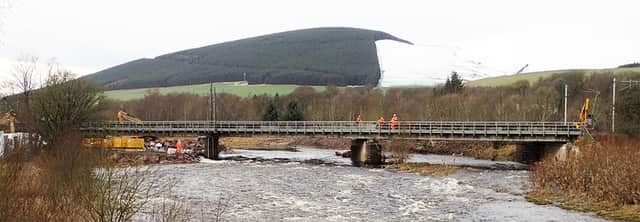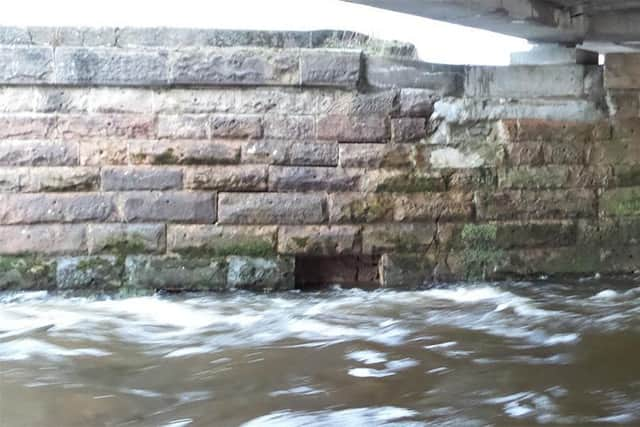Network Rail fined £10,000 for allowing trains to use storm-damaged viaduct which could have lead to fatalities


The Government-owned company responsible for Britain’s rail infrastructure was prosecuted at Lanark Sheriff Court on November 18, rail regulator the Office of Rail and Road (ORR) said.Lamington Viaduct – which carries trains travelling between Carlisle and Glasgow across the River Clyde in South Lanarkshire – was badly damaged by severe storms in late 2015.Network Rail allowed several trains to use the crossing before it was closed for seven weeks for major repairs to its foundations.The organisation was prosecuted by the Crown Office and Procurator Fiscal Service following an ORR investigation.
The ORR found that the network was allowing trains to cross the viaduct at high speeds despite its central pier being damaged by scour - removal of the riverbed beneath the pier foundation- and a hole one metre deep under the foundations.
Advertisement
Hide AdAdvertisement
Hide AdA train driver reported a defect on the track on December 31 2015 and trains were told to cross at low speed while a maintenance team was sent to the site.


However, the team found “no significant track defects" and the speed restriction was lifted, allowing further trains to cross.
The damage was noticed after a Crewe to Glasgow service passed over the viaduct at about 110mph and Network Rail’s maintenance team recorded "large track movements" and immediately put a speed restriction in place.
The ORR noted a derailment of the line could have resulted in multiple casualties or fatalities.A report by the Rail Accident Investigation Branch published in November 2016 outlined major flaws in Network Rail’s bridge-monitoring and safety assessment programme.HM Chief Inspector of Railways Ian Prosser said: “We welcome this outcome by the Crown Office.“Our investigation revealed that Network Rail staff were unaware that they held safety critical duties under Network Rail’s processes to manage infrastructure during extreme weather.“The viaduct was on Network Rail’s list of high risk structures vulnerable to being washed away by moving water, yet despite this being a known issue, severe damage went unrecognised because Network Rail failed to implement its own procedures which would have meant no passenger trains should have passed over the viaduct.“This verdict should be a reminder to Network Rail, as it progresses plans led by its two new task forces, that it must continue to acknowledge and act to guard against the serious impact of severe weather on infrastructure.”
A Network Rail spokesperson said: “We fell short of the standards expected of us in our response at Lamington and we immediately made significant changes to our management of scour-risks in Scotland as a result of this incident.
“We invest heavily each year in projects designed to minimise the impact of river flow on vulnerable structures and we have also deployed telemetry equipment at high-risk bridges to help improve early identification of potential issues.”
In August, Network Rail launched task forces to consider the impact of heavy rainfall on the railway and the management of cuttings and embankments.This came after three people died in the Stonehaven rail crash, when a train hit a pile of washed-out rocks and gravel before derailing.